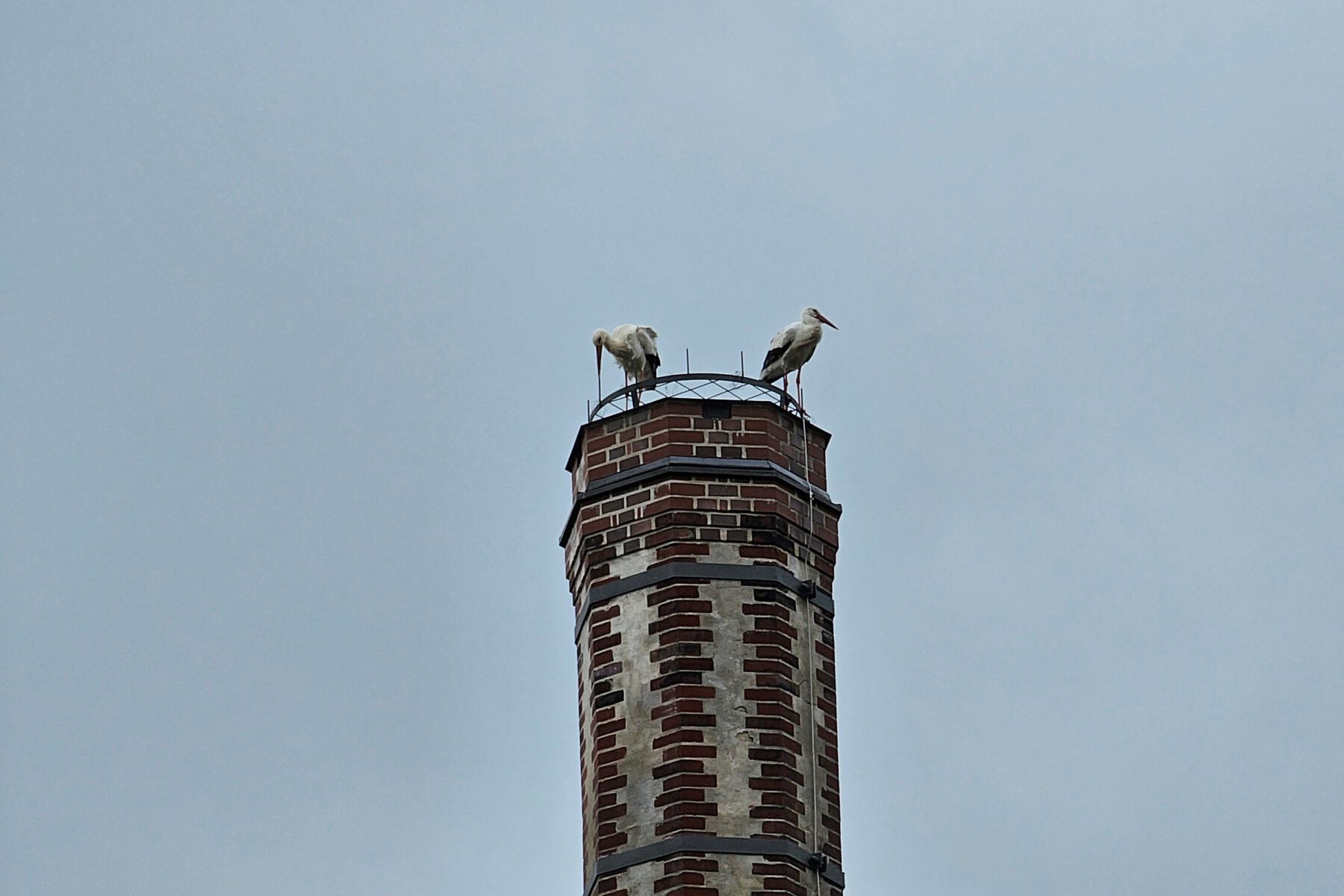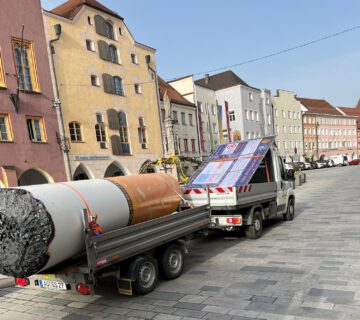Seven storks spotted in Raitenhaslach - better conditions in Raitenhaslach for the migratory birds since cattle grazing
With their wingspan of almost two meters, they sailed over Raitenhaslach on Tuesday morning: seven storks stopped in the area around the former monastery. It is impossible to say whether a pair of storks actually settles in Burghausen and builds a nest. “It would of course be nice if a pair of storks nested in Raitenhaslach. In the meantime the storks have already flown away. We’ll definitely be watching over the next few days to see whether they come back again,” says Sarah Freudlsperger, head of the Burghausen environmental office.
Two of the storks stood on the 30 m high brewery chimney for quite a while. In 2014, as part of the renovation of the chimney, a construction company installed an artificial stork's nest at the request of former mayor Hans Steindl and local community guardian Wolfgang Hopfgartner. In 2018, the environmental office, the municipal gardeners and the Raitenhaslach fire department renovated the nest. Both times the nest was sprinkled with lime to mimic bird droppings. Storks prefer nests that have already been incubated by other pairs.
However, the Nest campaigns were not successful. In recent years, storks have occasionally been spotted in Burghausen. However, they were always migrants. “To date, no pair of storks have settled in Raitenhaslach. I can't remember it happening in the past either. It remains a pipe dream, but perhaps it will come true this year,” says Hopfgartner.
“The situation in Raitenhaslach has now improved significantly. “Especially due to the extensive pasture management with the buffalo pasture and the flowering meadow, the stork would have many wet meadows and ponds in which to find food,” explains Holger Lundt, amateur ornithologist and chairman of the Burghausen local group of the Federal Nature Conservation Association. However, Lundt does not know whether the meadows around Raitenhaslach are sufficient for a pair of storks.
Storks are migratory birds and usually spend the winter in Africa. The Salzach is a natural flight path for migratory birds. Further up the Salzach, in Fridolfing, for example, there have been repeated breeding successes with storks for decades.
“It would be a great nature experience if a pair of storks stayed here. This also fits perfectly with Raitenhaslach and the species protection efforts there. This would fulfill one of my heart’s desires,” says former mayor Hans Steindl. It is still something special when storks breed in Bavaria. Of course it would be even nicer if this was the case in Burghausen.
“We are keeping our eyes open and will continue to do everything we can to ensure that nature conservation in Burghausen is as important as sustainability. Then it will work with the storks too,” says First Mayor Florian Schneider confidently.





